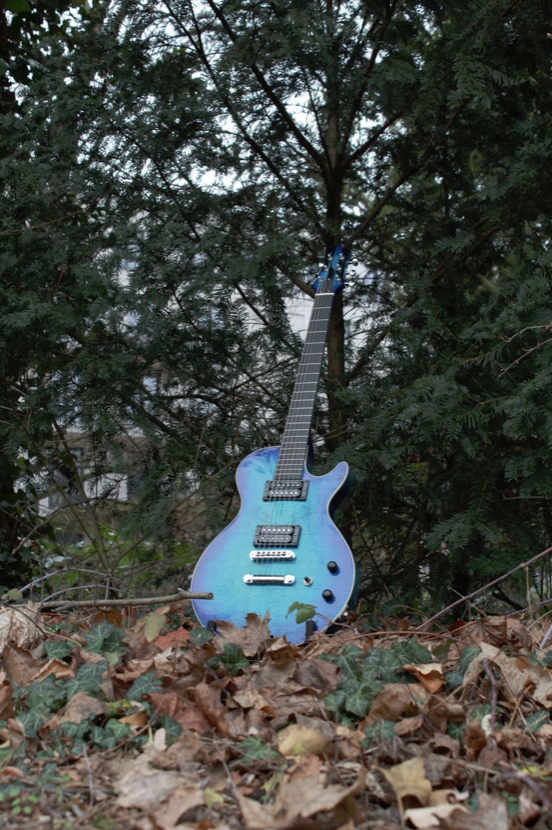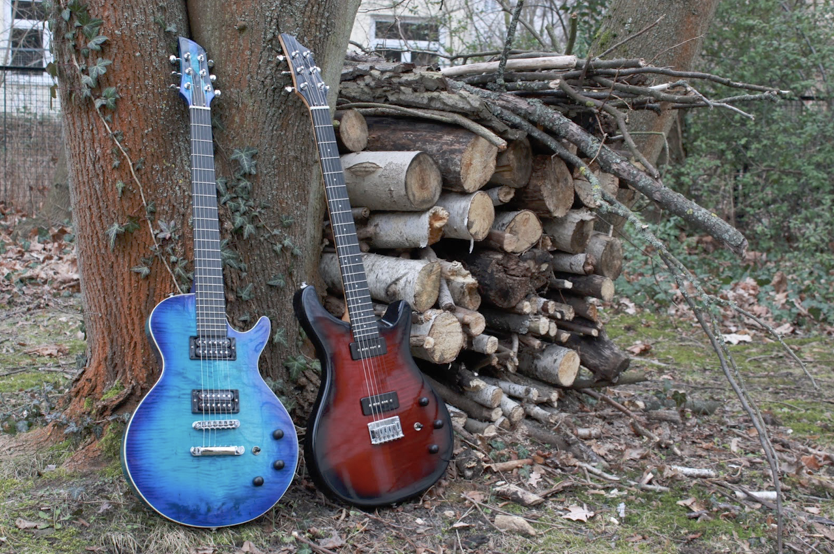“It’s not the fault of the wood if it wakes up as a violin.” Arthur Rimbaud
If it wakes up instead as a guitar, it might be the fault of Jacob Horack. I met with Jacob on a December afternoon shortly before the winter break. We sat down in the library amid the busyness of finals week and chatted about guitars—not the playing of them, but the making. Though currently studying at BCB, Jacob recently took a semester-long leave of absence to study as a luthier, or craftsperson for string instruments with a neck and a soundbox: think guitar, bass, violin. We’d met through a friend, and I was very interested in learning more about what`s, unfortunately, an uncommon art:
The word comes from French as a descendant of the word lute, which itself is a derivation of the Arabic al-‘ud, literally “the wood.” Today, one of the most well-regarded programs for learning principles of guitar-crafting is the Galloup School of Guitar Building and Repair in Michigan, at which Jacob earned his journeyman qualification.
“So how did you become interested in luthiere?”
I guess this started back when I was a kid. There was an artists’ workspace called Lowe Mill in my hometown—Huntsville, Alabama. One day my parents and I were walking through and we found this place that made cigar box guitars that you can go and make with the help of someone, and it was a lot of fun. And I still have that guitar back at home.
A cigar box guitar is a small (10×15 cm or so) instrument made using a cigar box as the resonator. Its history can be traced back to an North African instrument called the gimbri, which are to this day popular among folk musicians in Morocco.
I had a lot of fun doing that. I had the cigar box guitar at home. And I got to Berlin and I started my academic career. I was looking at options and this guitar crossed my mind and I thought, I really enjoyed doing that. And there’s something very satisfying about working and having an actual product that you can hold. That visual progress is very, very, satisfying to have and also makes it less of a job and more like a project. And so I started looking for programs where I could learn this properly as an instrument maker.
I found a school called Galloup School of Guitar Building and Repair in Big Rapids, Michigan. It’s one of the premier schools, and one of the few places where you can properly learn how to make a guitar.
The Galloup School was started by someone who’s rather famous in the luthiere world, Brian Galloup, who the school is named after. His whole thing was how to make a musical instrument, and looking into what actually makes a musical instrument. I spent four months in Big Rapids, and it was an eight to five job every day. You wake up during the week, go to the shop, and you work.
Did you have any experience in woodworking before going there?
I had very basic experience in woodworking. I knew how to use a bandsaw, but I was not prepared for the level of precision that was required and there are some mistakes on my first guitars that are evidence of that. But something they tell you at the school is:
1) These guitars are not meant to be perfect. They are the vehicles from which you learn how to make a guitar and learn the craft; and
2) The mark of a great luthier is not only how few mistakes you make, but how well you hide them.
An example is my second guitar, which was a Les Paul style carved top. When I was carving the neck, a chisel ran into the wavy wood grain and it kind of dug in and chipped out. We couldn’t find the chip to glue it back in it, and so in the geometry of the neck it would have had a concave hole. What we ended up having to do was fill it in with epoxy, sand that entirely to be level with the wood, and then cover that with colored lacquer.
Did the mistake end up looking kind of purposeful?
It’s almost unnoticeable, because we stained the wood and then sprayed colored lacquer on top of it. The epoxy didn’t take the stain and so it’s just a small patch of dark purple in an otherwise dark blue area. But yeah, I suppose that’s how it all got started.

Whoa. What an origin story. So since then, how many guitars have you made?
Including that original cigar box guitar, I’ve made three. I made one flat top electric. I want to make an electric guitar because I’d like to do this in Berlin, and the market here is electric. I also want to make electric basses because I’m a bass player, I don’t really play guitar. For learning how to make a bass, which is essentially a bigger guitar, it’s the same as an electric.
Wonderful. I was also wondering, if you were to branch beyond bass, beyond guitar, and just make an imaginary instrument, what would it be?
Oh, there are side projects, for sure. I actually have a few cooking up with my friend Nixie. As soon as I met him he immediately asked me, could you make a lyre that also has a woodwind instrument attached to it? I was like, I can sure try, this sounds fun. I also have some projects regarding experimental instruments based on the question, how do you actually develop the guitar? What do you do to make it your own? How do you change that? And for me, personally, I think a large part of it is worn ergonomics and comfort: how comfortable is it to play? But before that comes the sound. You have to hone in on a design before you can improve the sound of your design, because a lot of that comes from wood, weight, and mass reductions to alter the innate vibrations and how it transduces the energy from the strings into the resonation that you hear.
Thank you, Jacob! Our conversation meandered into topics of wood selection, lumber slander, and just what happens when the unmusically inclined are exposed to obscene amounts of music. Catch the rest of it here in the very near future.

